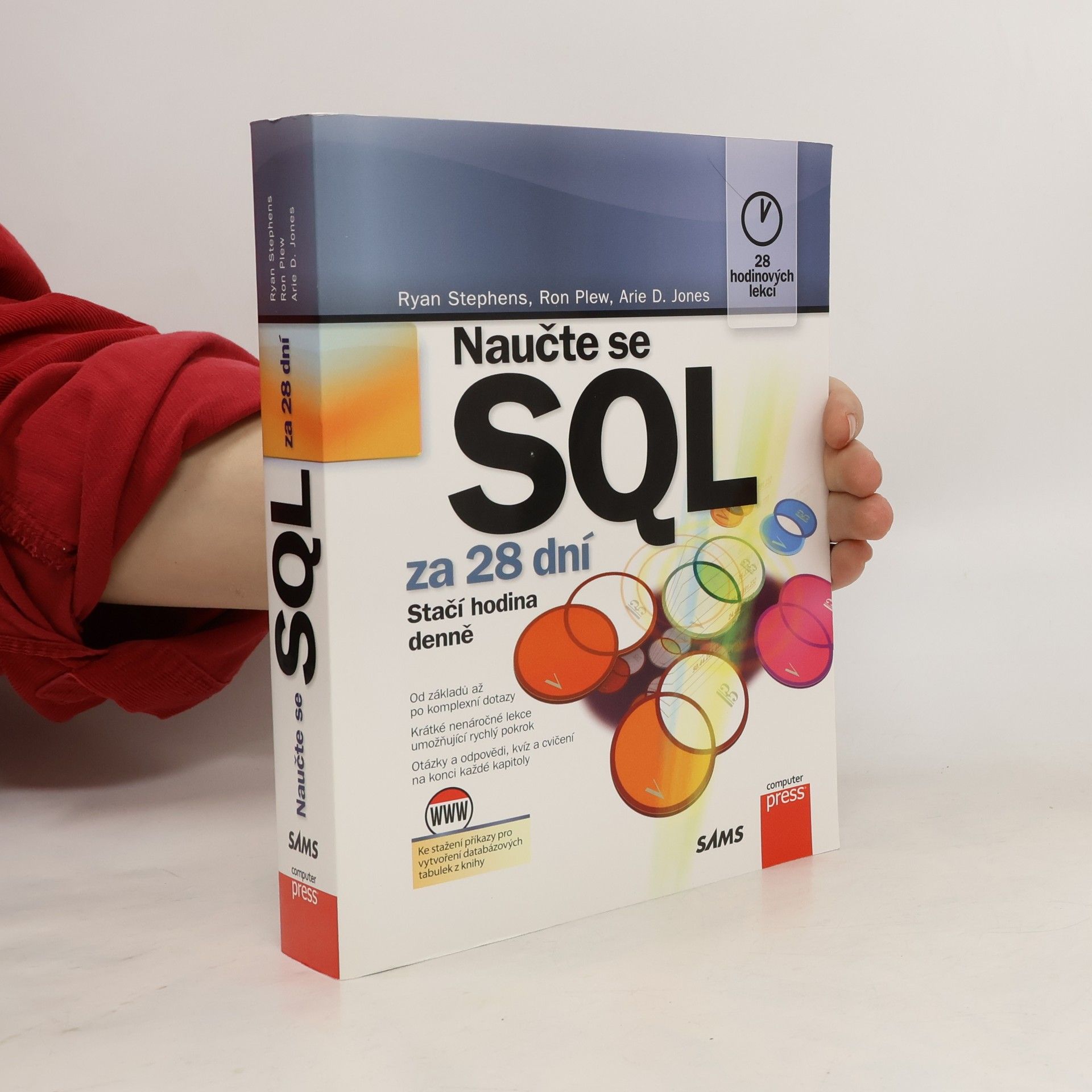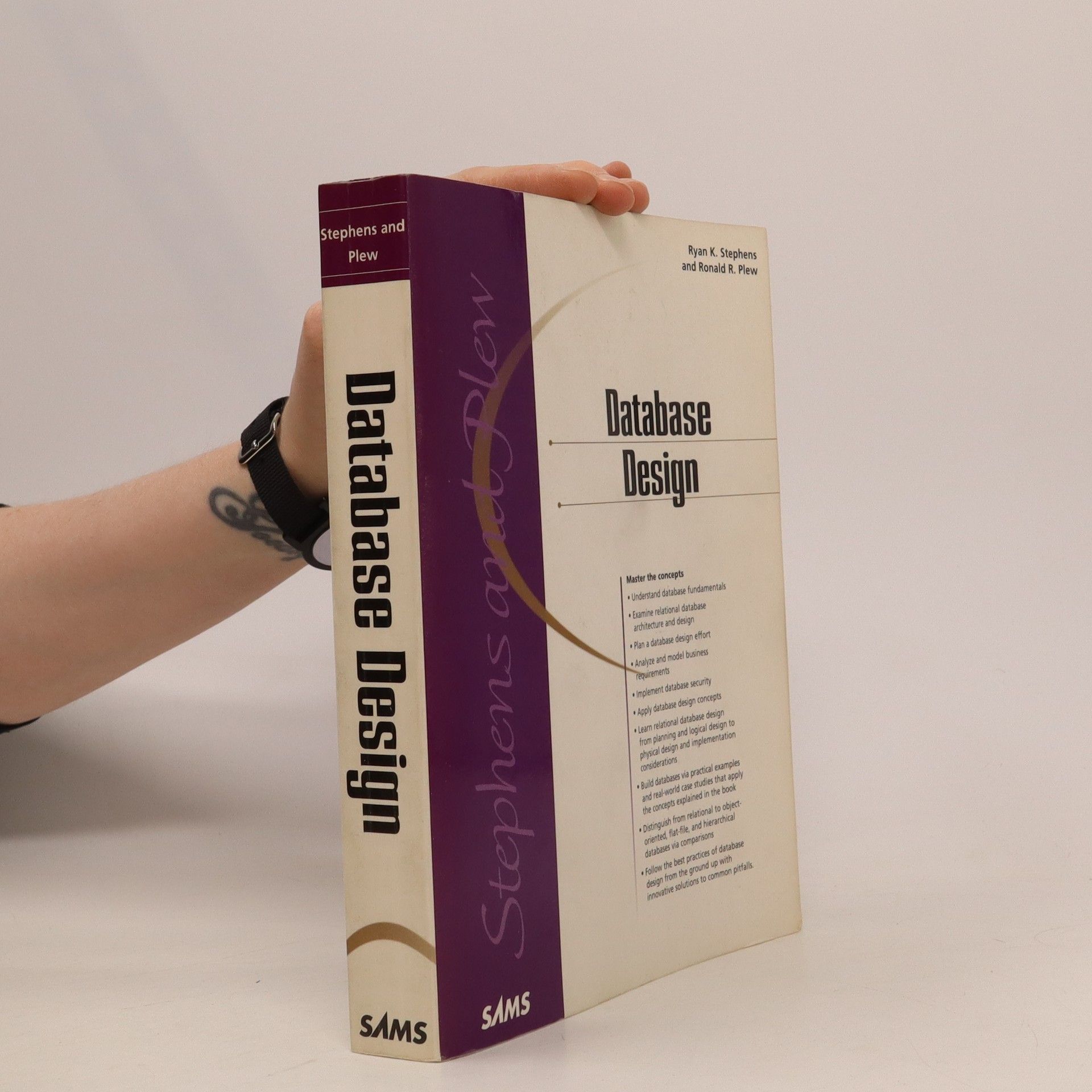The straightforward, step-by-step approach shows students how to work with database structures, objects, queries, tables, and more. In just hours, they will be applying advanced techniques, including views, transactions, web connections, and powerful Oracle and SQL Server extensions. Every lesson builds on what students have already learned, giving them a rock-solid foundation for real-world success. Step-by-step instructions carefully walk students through the most common SQL tasks. Practical, hands-on examples show students how to apply what they learn. Quizzes and exercises help them test their knowledge and stretch their skills. Notes and tips point out shortcuts and solutions. Learn how to... Define efficient database structures and objects "Normalize" raw databases into logically organized tables Edit relational data and tables with DML Manage transactions Write effective, well-performing queries Categorize, summarize, sort, group, and restructure data Work with dates and times Join tables in queries, use subqueries, and combine multiple queries Master powerful query optimization techniques Administer databases and manage users Secure databases and protect data Use views, synonyms, and the system catalog Extend SQL to the enterprise and Internet Master important Oracle and Microsoft extensions to ANSI SQL
Ryan Stephens Book order





- 2022
- 2010
Naučte se SQL za 28 dní
- 728 pages
- 26 hours of reading
Aktualizované vydání bestselleru přináší komplexní přehled SQL s mnoha praktickými příklady. Pokrývá všechna důležitá témata a obsahuje užitečné přehledy příkazů a funkcí, takže už nemusíte hledat další knihy o SQL. S pouhou hodinou denně se za necelý měsíc naučíte SQL od základů a jednoduchých dotazů až po pokročilé operace, jako jsou spouštěče a dočasné tabulky. Každá z 28 lekcí končí shrnutím, otázkami a odpověďmi, kvízem a cvičením, které vám pomohou upevnit a otestovat nově nabyté znalosti. Kniha nevyžaduje žádné předchozí znalosti a na rozdíl od jiných příruček se podrobněji věnuje tématům, která konkurence opomíjí. Naučíte se například: - Pracovat s dotazy, výrazy, podmínkami a operátory - Využívat vestavěné funkce - Udržovat databázi v bezchybném stavu - Manipulovat s daty - Používat pokročilé nástroje (procedury, kurzory) - Ladit dotazy a napojit databázi na další aplikace - Zvládat různé implementace SQL Autoři Ryan Stephens a Ron Plew, zakladatelé Perpetual Technologies, Inc., vedou tým administrátorů spravujících databáze klientů po celém světě a mají na svém kontě více než dvanáct publikací zaměřených na SQL. Arie D. Jones, další autor, pravidelně vystupuje na odborných konferencích a vede tým ve své společnosti.
- 2004
Naučte se SQL za 21 dní
- 581 pages
- 21 hours of reading
Pochopte principy jazyka relačních databází - uplatněte získané dovednosti při tvorbě dotazů a databázových aplikací.
- 2000
Ce livre propose de maîtriser le langage de requêtes SQL (Structurel Querv Language) et de construire de puissantes. bases de données relationnelles. Composé de 24 chapitres, il apprendra notamment à :. Créer des objets, extraire, trier et regrouper des données. Travailler avec le DML (Data Manipulation Language, langage de manipulation des données). Mettre en œuvre les fonctions permettant d'exploiter les résultats retournés par les requêtes. Concevoir des sous-requêtes pour optimiser les résultats. Combiner des requêtes SQL à l'aide des opérateurs ensemblistes. Créer des index et simplifier la recherche des données pour l'utilisateur final. Concevoir, gérer et supprimer des vues. Optimiser la sécurité des bases de données. Un chapitre est par ailleurs consacré à l'un des aspects les plus fondamentaux de toute base de données relationnelle : la gestion des utilisateurs (création d'utilisateurs, relation entre utilisateur et schéma, profils et attributs des utilisateurs). La fin du livre porte sur le développement de bases de données en ligne et sur un certain nombre de concepts avancés tels que les curseurs, les procédures stockées et les déclencheurs
- 2000
Database Design
- 528 pages
- 19 hours of reading
Database Design is the book you need to master the fundamentals of relational database design in today's ever-evolving world of database technologies. This book takes an approach to database design to teach the reader how to reach into the inner depths of an organization to understand the business needs, data, and daily processes that will all blend together to formulate a successful database. Much emphasis is placed on logical design as it is imperative to understand the inner workings of an organization to produce the highest quality database, while proactively eliminating future problems that are not so easy for a beginner to foresee. Additionally, topics such as change control, business rule integration, database security implementation, and legacy database redesign are covered in detail. Examples of SQL code are shown to portray implementation tasks of a relational database. Examples are compliant with ANSI standard.